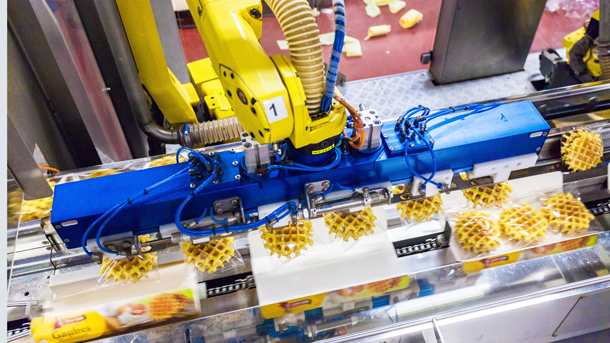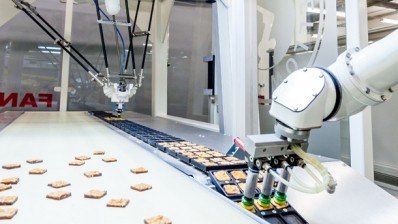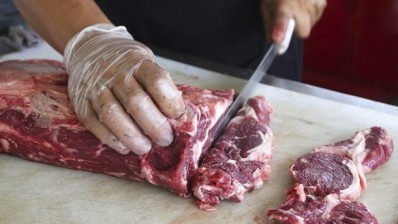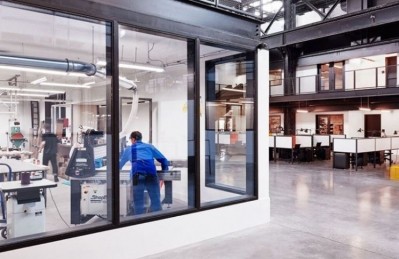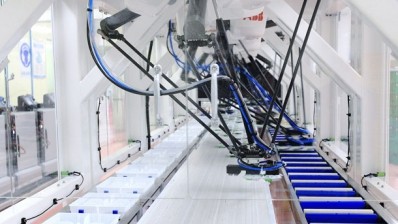Could cobots be coming to a food factory near you?
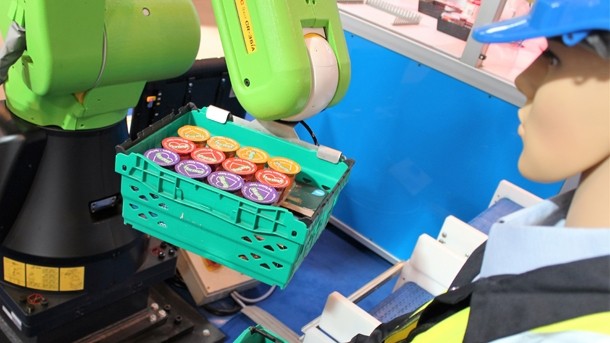
There have been a number of false starts in the past in relation to the adoption of automation and robotics in the UK food manufacturing sector, admits Laurence Wood, business development manager, UK and Ireland, for robotic systems supplier Stäubli.
“However, we now believe a combination of recent events is acting as a driver for a wave of automation and robotics in the sector,” he said.
British food and drink firms lag way behind other parts of the world when it comes to investing in automation generally and in robotics in particular.
Oddly, that’s even true compared with many markets where labour costs are significantly lower than they are in the UK, which implies that there’s more going on than a straightforward issue of costs versus benefits.
For Wood, the reason for this very British conundrum lies in the power of retailers in the UK, which have previously failed to offer food processors the secure, long-term contracts that they need to justify investing in automation.
However, the way that firms are responding to the retailers’ ongoing battle over prices could finally provide the nudge needed to spark a fresh wave of investment.
What’s more, it comes at a time when other factors are also lining up to create a new impetus for automation, such as the arrival of the National Living Wage and the shrinking cost of automated systems.
“Probably the most significant [factor] is the so-called retailers’ price war,” he says. “This has placed great pressure on the food processors to reduce costs and most processors accept that the best way to achieve this is via automation.
“The main barrier to automation from the processors’ side, as we understand it, has been the short contracts that retailers give the processors, which means they have been unwilling or unable to invest.
“We believe that there is some evidence the retailers are now aware of the situation and are offering longer-term contracts in return for price reductions. The security of longer-term contracts is allowing the processors to finance automation.”
The emergence of ‘cobots’ (back to top)
As well as changing market conditions, there are also changes within the technologies themselves that may make the use of robotic systems more attractive.
For instance, the relatively recent arrival of collaborative robots, or ‘cobots’, looks set to change the way that humans and robots can interact on the factory floor.
“In contrast to traditional robots, which cannot operate in an operator-occupied workspace without safety fencing, these cage-free robots can work side-by-side with humans on shared or separate tasks,” explains Andrew Armstrong, sales and marketing manager for Fanuc UK.
“Although collaborative robots do not eliminate the need for workplace risk assessments, the increased adoption of peripheral safety devices is enabling robots and humans to work in close proximity of each other, eradicating the fear of interrupting production or worse, an accident.”
Cobots may be designed to sense and respond to the presence of human operators in their workspace and/or to exert carefully limited force and power and to avoid potential accidents such as crushing incidents. This makes them safer to work alongside humans.
The first safety standards for collaborative robotics, ANSI/RIA R15.06, were published in 2013, with the ISO/TS 15066 standard arriving in March last year.
There are four safety measures included in the standard and at least one must be used to reduce any risk to humans, although some combination of measures is more likely.
First, there’s a safety-rated monitored stop, in which the controller tells the robot to stop when it detects that someone has entered its workspace. The robot should only start again once the human is out of the way.
Next is hand guiding, where the human can guide the robot by hand. Speed monitoring and a local emergency stop capability may also be required.
Third, the robot must maintain a specified separation distance from any people and operate at a pre-determined speed. This calls for a risk assessment that takes safe stopping distances into account.
Lastly, safety-related control systems can be used to monitor the power and force of the robot actuators to make sure they don’t breach the limits established by an up-front risk assessment.
“In line with ISO 10218 and ISO/TS 15066 standards, which relate to the collaborative operation and safety functions, end users or integrators will need to do a complete risk assessment to prove that their robotic application using a collaborative robot is safe,” says Armstrong.
“When doing a risk assessment, while the robot itself may be safe, the entire robotic system has to be considered, including grippers and any other peripheral equipment.”
It’s early days for cobots, which presently account for just 5% of the overall robot market, according to Paul Wilkinson, business development manager for end-of-line automation company, Pacepacker Services.
However, he expects them to make great inroads over the next few years: “Various market research companies have predicted that the collaborative robot sector will grow by 50% year-on-year, hitting $1bn in 2020.”
MGS Machine introduced a robotic palletiser last year that is designed to work without the need for a safety fence. The company says this cuts floor space requirements in half compared with conventional robotic palletisers.
Opportunity in food (back to top)
MGS is best-known for its work with companies in the pharmaceutical industry, but has identified the current opportunity in food and is, therefore, targeting food processors with this latest solution.
The system is based on a Fanuc CR-35ia cobot, which stops if it comes into contact with an operator, who can then reposition it before it resumes its activity.
Despite examples like this, Wilkinson notes that it won’t always be possible to use cobots in every application. “At present, food processing, packaging and palletising lines are largely a cobot-free zone, with the exception of some specialist applications.”
Part of the reason is that their limited speed and payload capabilities restrict their usefulness in these environments, he explains. “Because they are designed to work alongside humans they have to work at much slower speeds than conventional robots to minimise the risk of injury.
“This means that a cobot would not be able to achieve the speeds required by pick-and-place applications. In palletising tasks, while speed might not be a problem, payload might be for all but the strongest cobots.”
The demanding environments and cleaning regimes common to many food production facilities are another reason robots have not made as much of an impact in food as they have in other industries. Yet, the increasing availability of more robust solutions is changing that.
Stäubli, for instance, offers a range of four- and six-axis robots designed specifically to withstand humid environments and wash down procedures. “The joints are pressurised to stop water and steam ingress,” says Wood.
“They’re not rated for high-pressure water jetting but they’re perfect for wash down. We also work with the EHEDG [European Hygienic Engineering and Design Group] to test the ability of our humid environment range to withstand hundreds of different chemicals and validate its cleanliness and cleanability.”
In another example, Fanuc’s M-2iA pick-and-place delta robot is IP69K certified so it can withstand high-pressure and temperature cleaning.
In one recent installation at waffle manufacturer Biscuiterie Thijs in Belgium, this enabled the manufacturer to reduce its cleaning times by two-thirds through introducing a more vigorous cleaning procedure.
April robotic chef (back to top)
Increasing versatility is the other trend that is making robots a more appealing option for food processors.
In a good example, the University of Lincoln is currently playing host to a demonstration system developed in collaboration with automation specialist OAL. April (Automated Processing Robotic Ingredient Loading) is a robotic chef targeting the ready meals sector.
The first commercial system is on schedule for installation “somewhere in Europe” within the year.
“Imagine you’re at home with two saucepans and a frying pan. You can freely move, add ingredients and process to your desired recipe.
“This, in essence, is what April allows food manufacturers to do on an industrial scale; move a cooking vessel from one processing/ingredient station (heat, mix, etc) to another,” says OAL innovation and marketing manager, Jake Norman.
“It’s a very simple idea but the freedom to move is incredibly powerful and offers uniqueness unobtainable in a traditional kettle gantry arrangement. April offers the opportunity to automate both the handling of raw materials and processing together.”
Ultimately, the aim is for April to be able to rustle up a batch from start to finish based on a digitised work order (from an enterprise resource planning system, for instance) and without any human intervention – so-called ‘lights out’ manufacturing.
